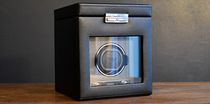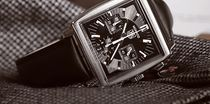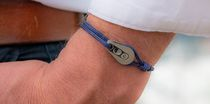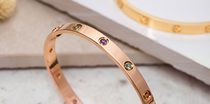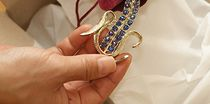Clear all filters
The men's watch, over a century of history
The love affair between men and their watches dates back to the 16th century, although traditional watchmaking was born several centuries earlier, with the installation of the first mechanisms in church steeples. By the 19th century, watchmakers had managed to miniaturize the movement to make ring watches for ladies. Abraham-Louis Breguet designed a wristwatch for the Queen Consort of Naples in 1811. For men, the wristwatch was initially a military instrument. In La Chaux-de-Fonds, Switzerland, in 1880, the House of Girard-Perregaux produced 2,000 watches for the Imperial German Army. Omega designed the first minute repeater wristwatch in 1892, followed by the first production models in 1900. For his part, Louis Cartier imagined the mythical Santos watch for his friend and aviator Alberto Santos-Dumont in 1904. The wristwatch ceased to be considered an "effeminate jewel" on the eve of the First World War and the men's models were consecrated at the Bern exhibition in 1914. After the conflict, inventions will follow one another rapidly: the first automatic wristwatch in 1926, the first waterproof watch - the Rolex Oyster - in 1927, the use of the chronograph, future major complication, during the 1932 Olympic Games, etc. The manufactures compete with inventiveness to sign firsts, create ever more advanced complications, more powerful models ... We think in particular of the first diver's watch, the Fifty Fathoms, developed by Blancpain for combat swimmers (1952), the first electric watch Hamilton Ventura (1957). Between technical prowess and design, the watch becomes a luxury object. Another watchmaking revolution was the appearance of the quartz watch, presented by the Seiko brand in 1969, the same year Buzz Aldrin set foot on the moon with an Omega Speedmaster on his wrist. One might have thought at the time that the electronic watch would dethrone the mechanical watch. There was even talk in Switzerland of a "quartz crisis". But in reality, even today, high-end watches remain for the most part traditional in their mechanism and manufactured in Swiss territory.
The biggest brands of men's watches
"If at 50 you don't have a Rolex, you've still missed your life". The phrase uttered in 2009 by advertising executive Jacques Séguéla has remained in the memory. The Geneva-based brand founded in 1905 by Hans Wilsdorf has remained at the top of the list of most prestigious watch brands. The most popular Rolex models are all iconic watches, Submariner, Daytona or Datejust. The second place on the podium of great watch brands is occupied by an even older House, Omega, founded in 1848 in La Chaux-de-Fonds and renowned as "the brand of technical innovations" with flagship models like the Seamaster and Speedmaster, which effectively position the men's watch in successful segments: the diver's watch and the pilot's watch. With two iconic men's models, the Tank and Santos watches, Cartier brings French-style luxury to the podium of a ranking largely occupied by Swiss watchmaking Houses. Judge for yourself: the next places are occupied by Patek Philippe, founded in 1839 and known for its complex models, Longines, founded in 1832, is the oldest brand still in business, Breitling, known for the robustness and reliability of its timepieces, Tag Heuer, the specialist in chronograph watches... And then again Jaeger-LeCoultre, the brand with 1242 calibers, Audemars-Piguet, Richard Mille, Tissot, Vacheron Constantin, IWC, etc. , etc. This predominance of Swiss watches is obviously not by chance, but by history. It has its origins in the banning of signs of wealth by the reformer John Calvin in 1541, which forced Geneva jewelers to convert to watchmaking, and then to the influx of Huguenot refugees into French-speaking Switzerland after the Edict of Fontainebleau (revoking the Edict of Nantes) a century later - and among them many watchmakers.
The men's watch, first and foremost a matter of style
Beyond the brand, the choice of a luxury watch rests first on that of a style. The urban man is not the adventurer who travels the world or the lover of extreme sensations. The watch is the reflection of both a lifestyle and a personality. The sobriety and elegance of classic watches usually worn with a leather strap is perfectly suited for a city timepiece, unless of course you're into watches with horological complications (tourbillon, perpetual calendar, moon phase...), adopt a sporty-chic watch or are in the market for a vintage model. Another (broad) category of men's watches includes timepieces inspired by adventurous or sporting practices. These are especially diving watches, drivers' watches - born on the racetrack - and aviator watches. In short, sports watches with character.

